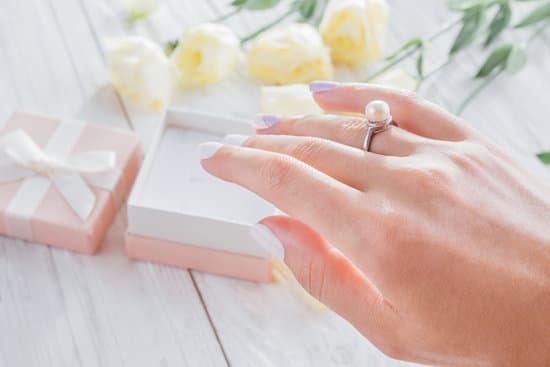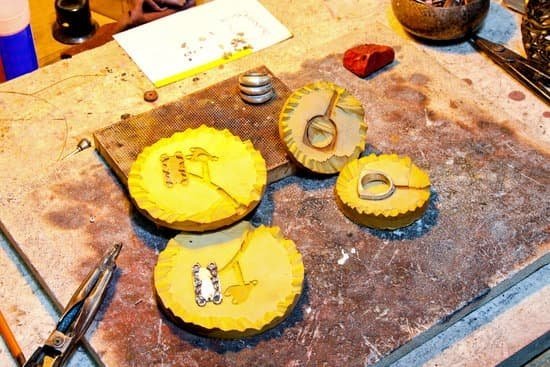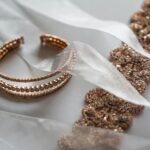Diamonds have always held a special place in the world of jewelry, captivating people with their unparalleled beauty and versatility. From engagement rings to necklaces, diamonds are used in various forms and styles to adorn individuals and emphasize their personal elegance. Beyond their aesthetic appeal, diamonds also carry deep significance and symbolism, making them even more cherished in the realm of jewelry.
In the realm of jewelry, diamonds are not just valuable gemstones; they hold immense importance and meaning. Throughout history, diamonds have been associated with power, wealth, and eternal love. Ancient civilizations were among the first to recognize the allure of diamonds, using them to create exquisite pieces of adornment. As time progressed, diamond jewelry evolved alongside society’s changing tastes and preferences. Today, they continue to be highly sought after for their timeless quality and ability to make a statement.
The art of jewelry making involves intricate processes such as cutting and setting diamonds. Diamond cutting techniques play a crucial role in determining the overall design and brilliance of a piece of jewelry. Different cuts, such as round brilliant or princess cut, create distinct visual effects that enhance the stone’s natural radiance. Moreover, skilled craftsmen meticulously set diamonds in various metal settings such as platinum or gold to further accentuate their beauty.
Overall, diamonds play a central role in the world of jewelry due to their unmatched beauty, rich history, and symbolic value. In this article, we will delve into different aspects related to diamonds in jewelry-making – from exploring their ancient origins to understanding modern trends involving synthetic alternatives.
We will also discuss caring for diamond jewelry to ensure its longevity and brilliance over time. So join us on this journey as we navigate through the various uses and forms of diamond jewelry while celebrating its enduring allure.
A Brief History of Diamonds in Jewelry
Throughout history, diamonds have played a significant role in the world of jewelry. The allure and beauty of these precious gemstones have captivated civilizations for centuries, making them an integral part of adornment and self-expression. This section will delve into the rich history of diamonds in jewelry, tracing their early use in ancient civilizations to their prominence in royal and aristocratic settings.
Early Use of Diamonds in Ancient Civilizations
The origin of diamond jewelry can be traced back thousands of years to ancient civilizations such as India, where diamonds were mined and revered for their brilliance and rarity. In these early cultures, diamonds were believed to possess mystical properties and were often used as decorative ornaments or talismans for protection.
Evolution of Diamond Jewelry Throughout History
As societies progressed, so did the craftsmanship surrounding diamond jewelry. In ancient Rome and Greece, diamonds were used to embellish various accessories such as brooches, hairpins, and rings. During the Renaissance period, advancements in cutting techniques allowed diamonds to truly shine, reflecting light with unparalleled brilliance.
Role of Diamonds in Royal and Aristocratic Adornment
Diamonds have long been associated with royalty and wealth. European monarchs during the Renaissance era began commissioning elaborate diamond jewelry pieces that showcased their power and status. The 19th century marked a turning point when British monarch Queen Victoria popularized engagement rings adorned with diamonds-a tradition that continues today.
Cutting and Setting Diamonds
Diamond cutting and setting are essential aspects of the art of jewelry making. The way a diamond is cut greatly impacts its overall design and brilliance, while the setting plays a crucial role in enhancing the beauty of the diamond. Mastering these techniques requires skill, precision, and an understanding of how to showcase the uniqueness of each diamond.
The process of cutting a diamond involves transforming a rough stone into a polished gemstone. Diamond cutters carefully evaluate the raw material to determine the best way to enhance its natural characteristics, such as color and clarity. Different cutting techniques, such as brilliant, princess, emerald, and marquise cuts, can create different effects and emphasize different features of the diamond.
Once a diamond is cut to perfection, it is then set into various metal settings to create stunning pieces of jewelry. Common setting styles include prong settings, bezel settings, channel settings, and pave settings. Each style has its own unique aesthetic and functionality.
| Diamond Cuts | Description |
|---|---|
| Brilliant Cut | The most popular cut that maximizes brilliance by creating multiple facets. |
| Princess Cut | A square or rectangular shape with brilliant faceting for exceptional sparkle. |
| Emerald Cut | A step-cut shape with long facets for a clean and elegant look. |
Properly setting diamonds is crucial not only for aesthetics but also for securing them safely in jewelry pieces. The choice of metal for the setting can complement or contrast with the diamond’s color and play a significant role in determining the style of the final piece.
Whether it’s a solitaire engagement ring, diamond earrings, or a diamond necklace, the cutting and setting of diamonds is a true art form. Skilled jewelry makers understand how to bring out the brilliance and beauty of each diamond through their craftsmanship. By meticulously combining the right cut and setting, they create dazzling pieces that are treasured by their owners for generations to come.
Types of Diamond Jewelry
Diamonds have long been associated with timeless elegance and luxury, making them a popular choice for a wide range of jewelry pieces. From engagement rings to necklaces, diamonds have a versatile appeal that can enhance any outfit or occasion. In this section, we will explore the different types of diamond jewelry and their significance in the world of fashion.
One of the most iconic uses of diamonds in jewelry is in engagement rings. Diamonds symbolize everlasting love and commitment, making them the perfect choice for couples embarking on a lifelong journey together. Whether it’s a classic solitaire diamond or a more intricate design with accent stones, diamond engagement rings are a timeless expression of love.
Another popular form of diamond jewelry is earrings. Diamond earrings add sparkle and elegance to any ensemble, whether it’s a casual day out or an evening event. From understated studs to elaborate drop earrings, there is a style to suit every taste and occasion. The brilliance and versatility of diamonds make them a go-to choice for those looking to make a statement with their accessories.
Diamond necklaces are also highly sought-after pieces of jewelry. They can be worn as everyday adornments or reserved for special occasions, adding glamour and sophistication to any outfit. There are various styles of diamond necklaces available, including pendant necklaces, choker necklaces, and layered designs. Each piece showcases the unique beauty and brilliance of diamonds while allowing individuals to express their personal sense of style.
Expensive Diamond Jewelry
Diamonds have long held a prestigious status in the world of jewelry, symbolizing wealth, luxury, and elegance. The allure and value of diamonds are particularly showcased in expensive diamond jewelry pieces that captivate the imagination and desire of many. In this section, we will delve into an exploration of these exquisite creations, highlighting some of the most famous and valuable diamond jewelry pieces, as well as high-end designs and trendsetting styles worn by celebrities.
The World’s Most Famous and Valuable Diamond Jewelry Pieces
There are several legendary diamond jewelry pieces that have become iconic due to their significant historical importance or exceptional beauty. One such example is the Hope Diamond, a breathtaking deep blue diamond weighing 45.52 carats.
With a storied history dating back centuries, this diamond has passed through numerous hands before finding its permanent home at the Smithsonian Institution. Another famous piece is the Graff Pink Diamond Ring, a rare pink diamond weighing 24.78 carats that set a world record for the most expensive jewel ever sold at auction.
Haute Joaillerie: High-End Diamond Jewelry Crafted by Renowned Designers
High-end diamond jewelry often falls under the category of “haute joaillerie,” which refers to fine jewelry crafted by esteemed designers using only the highest quality materials and craftsmanship. These exclusive creations are often one-of-a-kind or limited edition pieces that showcase unparalleled creativity and artistry. Renowned designers such as Harry Winston, Cartier, and Van Cleef & Arpels consistently release collections that feature exceptional diamonds set in intricate designs ranging from necklaces and bracelets to tiaras and brooches.
Trendsetting Diamond Jewelry Worn By Celebrities
Celebrities have long been admired for their sense of style and ability to set trends in fashion. When it comes to diamond jewelry, they often have access to some of the most exquisite and unique pieces available.
From red carpet events to high-profile weddings, celebrities are frequently seen donning eye-catching diamond jewelry that sparks interest and influences market trends. Notable examples include Elizabeth Taylor’s collection of diamond jewelry, including the stunning Bulgari Cleopatra necklace, as well as Kim Kardashian’s engagement ring featuring a 20-carat emerald-cut diamond.
Expensive diamond jewelry represents a pinnacle of opulence and fine craftsmanship. These extraordinary creations continue to capture the imagination and desire of individuals who seek out the ultimate in luxury adornments. Whether it’s a legendary historical piece or an exclusive design by a renowned designer, these jewels embody the enchanting allure and enduring value of diamonds in the world of jewelry.
Synthetic Diamonds
As technology continues to advance, the world of jewelry making has seen the emergence of synthetic diamonds as a modern alternative. Synthetic diamonds, also known as lab-grown or man-made diamonds, are created in laboratories using high-pressure, high-temperature (HPHT) or chemical vapor deposition (CVD) processes. These lab-grown diamonds have become increasingly popular in recent years due to their similarities with natural diamonds and their lower costs.
One key difference between synthetic and natural diamonds is how they are formed. Natural diamonds are created deep within the Earth’s mantle over millions of years whereas synthetic diamonds are created in a controlled environment within weeks or months. However, both types of diamonds have the same chemical composition of carbon atoms arranged in a crystal lattice structure.
The use of synthetic diamonds in jewelry making presents several advantages. Firstly, they offer a more affordable option for those who desire the beauty and elegance of diamond jewelry but may not be able to afford natural diamond pieces.
Additionally, lab-grown diamonds are considered to be more environmentally friendly as they require less mining and do not contribute to ecosystem disruption. However, it is important to note that there are also disadvantages associated with synthetic diamonds such as potential ethical concerns surrounding their production processes and the current lack of understanding about long-term durability.
Despite these considerations, synthetic diamond jewelry has gained popularity among consumers looking for sustainable options without compromising on quality or aesthetics. With advancements in technology, it has become difficult to distinguish between natural and synthetic diamonds without specialized testing equipment. Jewelry designers and manufacturers have embraced this modern alternative by incorporating synthetic diamonds into various pieces such as engagement rings, earrings, bracelets, and necklaces.
Diamonds and Birthstones
The beauty and allure of diamonds extend beyond their role as exquisite gemstones in jewelry. Diamonds also hold a special significance as birthstones, representing the month of April. The connection between diamonds and birthstones is fascinating, allowing individuals to personalize their jewelry and commemorate their birth month in a truly stunning way.
Diamonds have been classified as birthstones for the month of April since ancient times. The use of birthstones dates back to biblical times, with each stone believed to hold certain powers and properties that enhance the wearer’s life. In this context, diamonds are associated with qualities such as clarity, strength, and invincibility. As the hardest substance on earth, diamonds symbolize resilience and endurance – making them an ideal birthstone representation for April-born individuals.
When it comes to creating birthstone diamond jewelry, there are numerous customization options available. Whether it’s a pendant necklace featuring a single diamond or a Birthstone ring adorned with diamonds alongside other gemstones, the possibilities are endless. Birthstone diamond jewelry can be designed in various styles to cater to different preferences – from classic and understated to bold and contemporary.
To ensure that birthstone diamond jewelry remains cherished for years to come, proper care is essential. Storing diamond jewelry separately from other pieces helps prevent scratches or damage. Regular cleaning using mild soap and warm water can restore its brilliance. However, it is advisable to seek professional help for regular maintenance and inspections to keep the jewelry in optimal condition.
Caring for Diamond Jewelry
Diamond jewelry is not only stunning but also a significant investment. To ensure its longevity and maintain its brilliance, proper care and maintenance are essential. In this section, we will provide some expert tips on how to take care of your diamond jewelry.
One of the first steps in caring for diamond jewelry is knowing how to handle and store it properly. When handling your jewelry, it is important to avoid touching the diamonds with your fingers as oils from your skin can affect their brilliance. Instead, hold the piece by its metal components.
It is also crucial to store your diamond jewelry separately from other pieces to prevent scratching or damage. Consider using a soft cloth or individual fabric pouches for each piece, ensuring they do not come into contact with other items.
Cleaning your diamond jewelry regularly is another vital aspect of maintenance. Over time, dirt and oils can build up on the surface of the diamonds, dulling their shine. There are different methods you can use to clean your diamond jewelry at home.
One common method involves soaking the piece in a solution of warm water and mild dish soap for about 20-30 minutes before gently scrubbing it with a soft-bristled toothbrush. However, it’s important to note that not all gemstones are compatible with this method, so be sure to check if any other gemstone accents necessitate alternative cleaning techniques.
While cleaning at home is suitable for regular maintenance, professional cleaning is recommended periodically to ensure a thorough cleanse and inspection of your diamond jewelry. Experts recommend taking your diamond pieces to a trusted jeweler every six months or so for inspection and professional cleaning. A professional jeweler has knowledge of specific cleaning agents suitable for diamonds and can also diagnose any potential issues or loose settings that may need repair.
By following these maintenance and cleaning tips, you can keep your diamond jewelry looking dazzling and beautiful for years to come. As treasured possessions, diamonds deserve the proper care and attention to maintain their brilliance and longevity. With regular cleaning and professional inspections, you can enjoy the eternal allure of diamond jewelry for generations.
Conclusion
In conclusion, diamonds have always held an undeniable allure in the world of jewelry. From ancient civilizations to modern times, these precious gemstones have been treasured for their beauty, versatility, and symbolic significance. Throughout history, diamonds have played a crucial role in adorning royalty and aristocracy, showcasing their timeless status as a symbol of wealth and power.
The art of jewelry making truly comes alive in the cutting and setting of diamonds. The meticulous craftsmanship involved in creating intricate diamond cuts enhances the brilliance and fire of these gemstones.
Whether it is the classic round brilliant cut or more unique shapes like emerald or princess cut, each diamond cut adds its own distinctive touch to jewelry design. The choice of metal setting further enhances the beauty of diamonds, whether it is a sleek solitaire on an engagement ring or a dazzling display of diamonds on a necklace.
From engagement rings that symbolize love and commitment to earrings that add sparkle to any outfit, diamond jewelry encompasses a wide range of types and styles. It is no wonder that diamond necklaces are considered versatile and glamorous adornments for any occasion. These pieces not only elevate one’s style but also serve as statements of personal taste and sophistication.
On the other end of the spectrum lies expensive diamond jewelry that showcases exquisite luxury. From famous pieces like the Hope Diamond to high-end creations by renowned designers, these jewels demonstrate the pinnacle of craftsmanship and opulence. Celebrities also contribute to setting trends in diamond jewelry with their stunning red carpet appearances.
In recent years, synthetic diamonds have emerged as a modern alternative in jewelry making. Lab-grown diamonds offer an ethical and sustainable option without compromising on quality or beauty. However, there are still differences between synthetic and natural diamonds that should be considered when choosing jewelry pieces.
Diamonds also hold special significance as birthstones, particularly for those born in April. The inclusion of diamonds in birthstone classifications allows for customization options when it comes to birthstone diamond jewelry. Whether it is a pendant, ring, or bracelet, these pieces hold sentimental value and can be cherished for a lifetime.
To ensure the longevity of diamond jewelry, proper care and maintenance are essential. By following simple storage and cleaning tips, one can preserve the brilliance of diamonds for years to come. Regular maintenance and professional inspections also help in maintaining the quality and shine of these precious gemstones.
In summary, diamonds continue to captivate us with their eternal allure in the world of jewelry. Their beauty, versatility, and symbolism make them truly unique. Whether it is a solitaire engagement ring or a dazzling necklace adorning an evening gown, diamond jewelry holds a special place in our hearts. As we explore and appreciate the various uses and forms of diamond jewelry, let us cherish the enduring value that diamonds bring to our lives.
Frequently Asked Questions
What are 3 things diamonds are used for?
Diamonds have a wide range of uses beyond just being a symbol of luxury and love. Firstly, diamonds are highly valued in the industrial sector for their exceptional hardness. They are used as cutting and grinding tools for drilling, shaping, and polishing materials like glass, metal, and stone. Secondly, diamonds find significant application in scientific research and technological advancements.
For instance, they are utilized in high-power lasers, semiconductors, and even as heat sinks in electronic devices due to their remarkable thermal conductivity. Lastly, diamonds hold great aesthetic value and are extensively used in the creation of exquisite jewelry. Their brilliance and durability make them ideal for adornment purposes such as engagement rings, necklaces, earrings, bracelets, and watches.
How are diamonds turned into jewelry?
The process of turning rough diamonds into stunning pieces of jewelry involves several intricate steps that require both skillful craftsmanship and precision engineering techniques. It begins with the careful selection of high-quality raw diamonds based on their color, carat weight, clarity, and cut grade. Jewelers then analyze the rough diamond’s shape and characteristics to determine how best to enhance its beauty through cutting and polishing.
After determining the ideal cut for maximum light reflection or “fire,” skilled artisans use specialized machinery to precisely cut the diamond into individual facets using angles calculated to optimize its brilliance. Next comes polishing where each facet is carefully smoothed out to remove any imperfections or scratches created during cutting. Finally, once the diamond is perfectly shaped and polished according to the design specifications outlined by an expert jeweler or gemologist, it can be set into a piece of jewelry using traditional metalworking techniques or more modern settings.
How are diamonds most commonly used?
Diamonds are most commonly used as gemstones in various forms of jewelry due to their unmatched beauty and durability. The elegance that diamonds exude makes them incredibly popular for engagement rings symbolizing eternal love between two individuals embarking on a lifelong journey together. The strength inherent in diamonds represents resilience in challenging times, as well as endurance and longevity.
Beyond jewelry, diamonds also hold significant value as a store of wealth and investment. Many individuals consider diamonds to be a safe way of preserving their capital and often purchase them for the purpose of building a valuable collection or as a means of diversifying their portfolio. Therefore, whether it is for sentimental reasons or financial security, diamonds are most frequently utilized for their aesthetic qualities as ornamental gems and tangible assets.

Welcome to my jewelry blog! My name is Sarah and I am the owner of this blog.
I love making jewelry and sharing my creations with others.
So whether you’re someone who loves wearing jewelry yourself or simply enjoys learning about it, be sure to check out my blog for insightful posts on everything related to this exciting topic!





